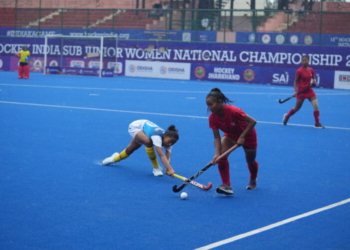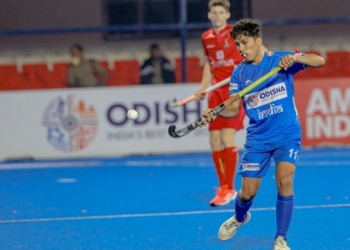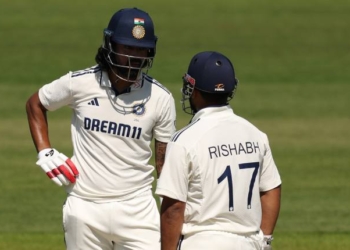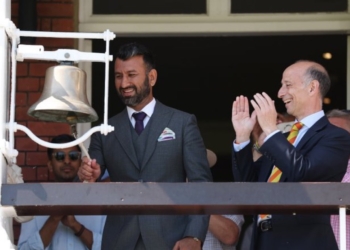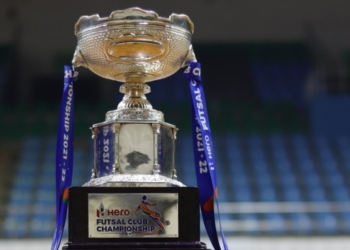New Delhi: Football is one of the most popular sports in the world. It is widely and madly followed in India too. Though extremely popular at school and college level, Indian football is still found to be wanting when it comes to international competitions.
Quite recently, a question was raised in Parliament about steps being taken to improve Indian football. The Sports Ministry listed a plethora of initiatives being taken by the Government to improve India’s Football performance and make us more competitive.
Sports researcher Dr Kanishka Pandey, in his latest report, said that there is no denying the fact that a lot is being done, however the question remains, “is it enough? Are we on track?”
Lots of football academies are coming up, numerous grassroot programs are being started and both the government and private sector are doing their bit. ISL has its own importance.
“However, all these initiatives are only for those who are self-motivated and dedicated enough to join these academies at a fairly young age. What about those who are not self-motivated or whose parents are pessimistic about football or even those who do not get an opportunity to know whether they have football aptitude or not,” Kanishka stated.
“This is where the idea of mass participation and — sports culture comes in. Today, a significant portion of the Indian population is literate. Everybody goes to school and performs as per his or her potential. From this large pool we are able to find good doctors, engineers and lawyers. Children get a chance to figure out their love for Mathematics, Biology, Law, Physics or Chemistry. Can the same not be applied to sports?
“A child will only figure out his love or inclination for a particular sport when he gets a chance to play. Children here don’t have access to fields (one Football Facility in 38134 children in Delhi Government Schools). Moreover, children do not even have access to right kind of football. On top of that even the sports instructors in schools aren’t familiar with different sizes of footballs for different age groups,” he said.
Kanishka further said case study conducted in 26 different schools of Ghaziabad city (Government and Private) revealed that: “In relation to sizes of football, most schools (15 out of 26) had only 1 football- 57%, six schools (6/26) had 2 different sized footballs- 23%, four schools (4/26) had 3 different sized footballs- 15%, only one school had 4 different sizes of football. No school had all 5 sizes of football. Only 5 out of 26 schools had Sizes 3,4,5 of footballs- 19%.
“Variation in sizes of footballs- Almost 90% (23 out of 26) schools had no policy for different sized footballs for different classes, Frequency of Heading the Football- Almost 80% school physical education instructors said the students don’t head the ball. International Guidelines on Sizes of Football- Only 2 out of 26 Physical Education instructors were aware about International Guidelines on sizes of football. Awareness about Safety Measures in Football- Only 5 out of 21 schools’ physical education instructors were aware about the fact that head injuries can be caused in football. They showed concerns about head injuries. Rest were adamant that injuries are a part of Sports. Popularity of Football- More than 60% (16 out of 26), physical education instructors agreed that football is popular in their schools and children enjoy playing the game,” the report highlighted.
He suggested that proper sized footballs of 5 sizes must be available in schools. Children must be given footballs as per their age. Footballs should not be over inflated.
“PTIs should be taught about heading footballs and other sports related injuries in BPEd. PTIs should ensure that footballs in schools are not over inflated and are as per the prescribed size of FIFA. The Ministry of Youth Affairs and Sports should make guidelines on heading for U-10, U-12, U-15, U-18 for both males and females (practicing professionally in academies and stadiums) regarding the following aspects: Determining the burden of heading in youth football, what sort of heading do they do?
“Addressing differences in the way headers are taught in football training, Differences in the incidence and characteristics of football headers in matches and training, and in different age and gender categories, Make headgear mandatory in Under 10 and Under 12 Matches, CBSE should make guidelines for heading footballs in schools, Further research should be conducted on this issue, which shall be funded by the Government, so as to help our Indian Population and the world,” he added.
Availability of proper sized footballs might help increase the interest of children, improve performance and most importantly reduce the risk of injuries.
Kanishka has written a letter to All India Football Federation (AIFF) as well in this regard.
“AIFF is very positive and doing their bit. But in order to produce good football talent we need football culture in a correct way,” he concluded.
(IANS)




